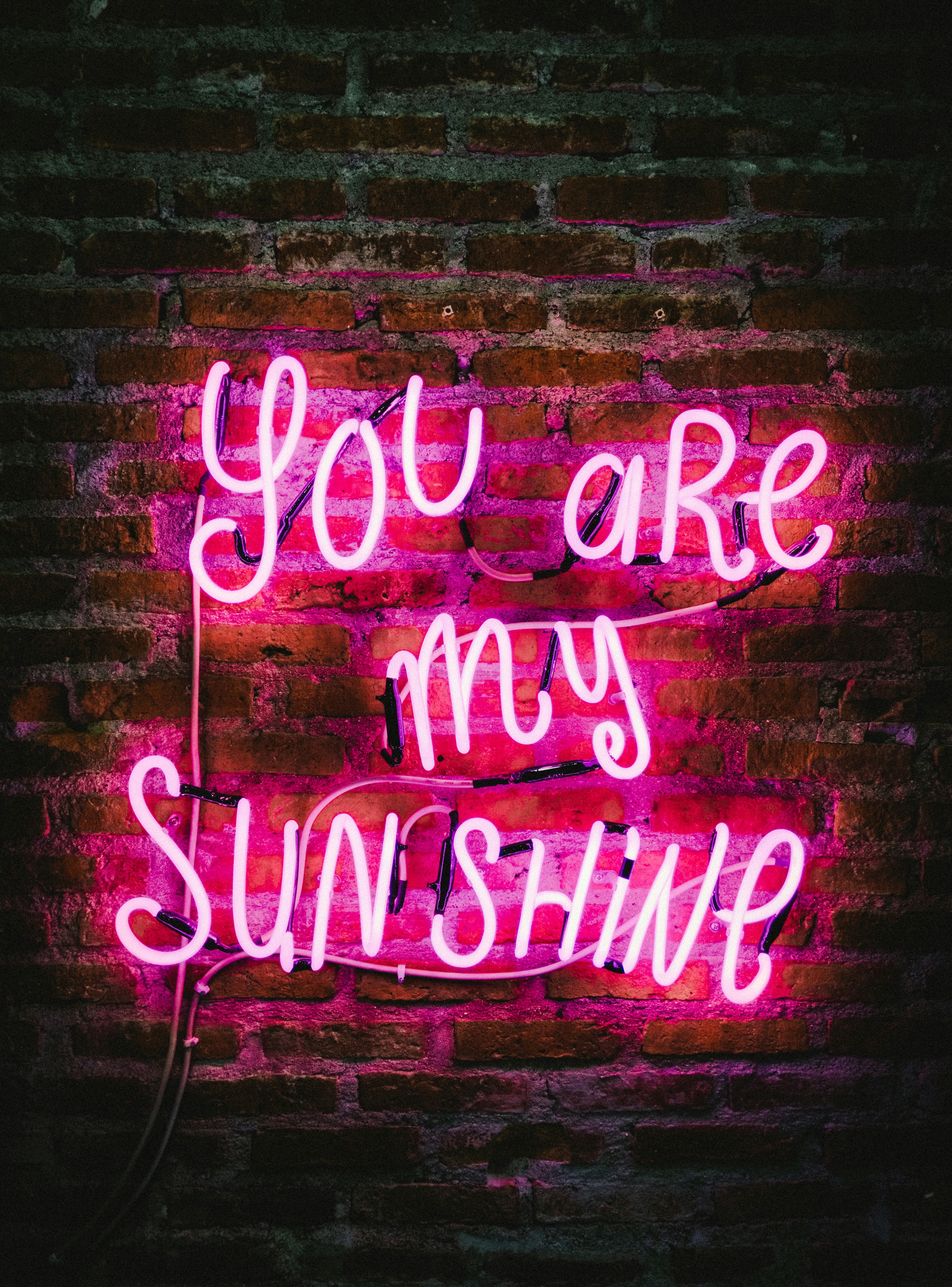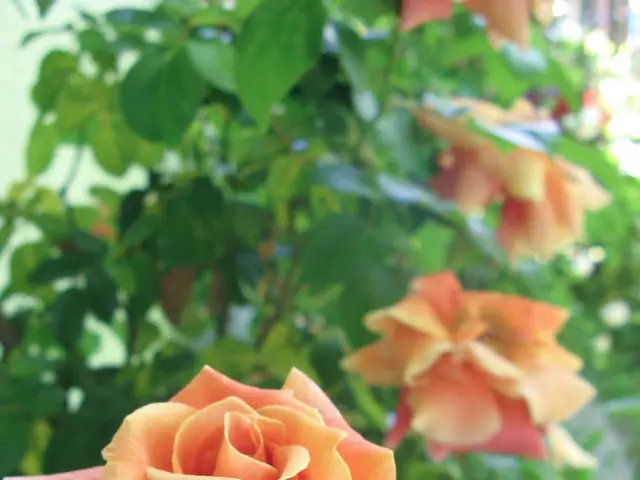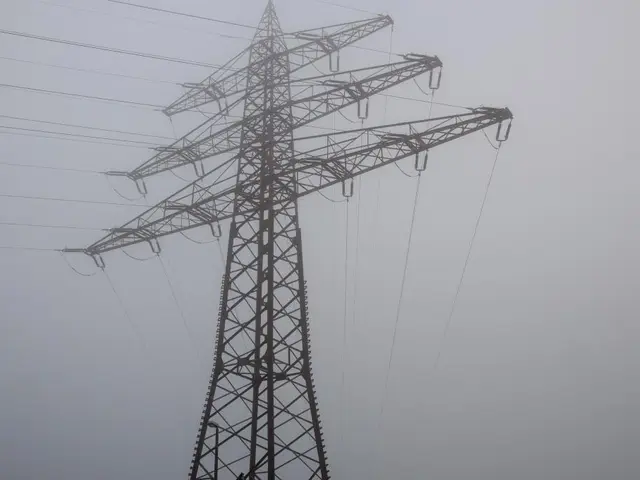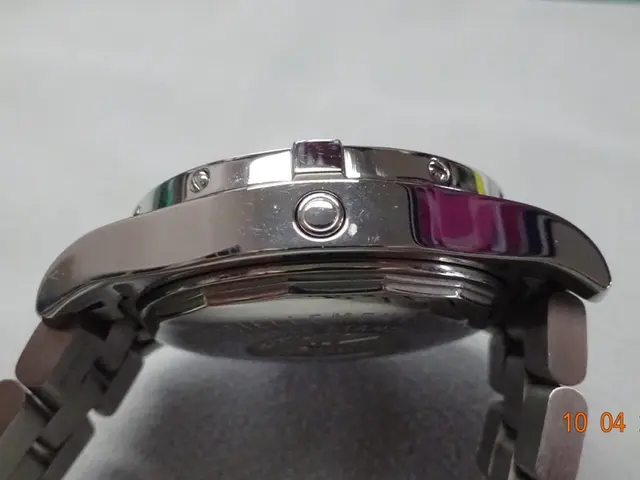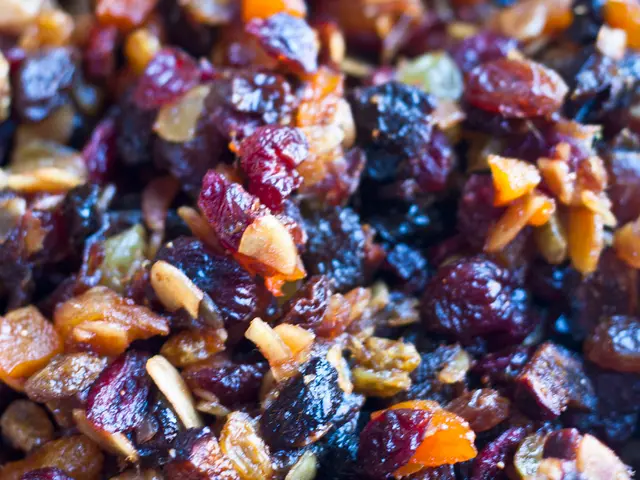Hummingbird-Resistant Flowers You Can't Afford to Miss Out On: Plant Them in May for a Cherished Sight!
Transforming Your Backyard into a Hummingbird Haven
Nature's tiny acrobats can be easily enticed into your garden by planting specific flowers that are bursting with vibrant colors and nectar. May presents the ideal time to introduce these flowers, creating a garden oasis filled with buzzing and fluttering hummingbirds that will last all summer. These plants do far more than simply delight the eyes – they serve as a welcoming mat for hummingbirds. From fiery reds to profound purples, their colors function as a beacon signaling a feast. By planting any combination of these flowers, you'll soon have a charming, lively backyard haven.
- Bee Balm: Vibrant blooms of red, pink, or purple colors make Bee Balm a favorite among hummingbirds. The tubular shape of the flowers is perfectly suited to their long beaks, allowing them to sip nectar with ease. This native perennial thrives in full sun and moist soil, offering the added bonus of being deer-resistant and attractive to butterflies. Some varieties can grow up to 4 feet tall, providing a dramatic touch to mid-garden landscapes, while displaying a provident bloom period from mid-summer to early fall. Don't forget to deadhead the flowers for even more blooms!
- Cardinal Flower: The fiery red spikes of Cardinal Flower are sure to catch a hummingbird's eye. It thrives in moist soil and can tolerate wet areas like stream edges, providing vertical color throughout the summer. Its nectar-rich blooms are irresistible to hummingbirds, turning it into a sought-after destination for winged visitors. Cardinal Flower is native in the wild and does particularly well in naturalized or woodland gardens. For optimal growth, plant it in partial sun. Be sure to mulch in winter to protect the roots.
- Salvia: Salvia is renowned for its nectar-rich flowers that can keep on blooming again and again. These tubular blossoms come in a variety of shades, with red, blue, and purple being popular among hummingbirds. 'Hot Lips' is a particular favorite due to its striking red blooms. These drought-tolerant plants flourish in sunny spots, and they not only resist deer but also attract other pollinators. To extend the blooming season into fall, don't forget to deadhead the flowers. Many Salvia varieties are perennial in warmer zones.
- Trumpet Vine: This vigorous climber offers hummingbirds a veritable nectar festival, with its large orange-red trumpets teeming with the sweet substance. This architectural plant is perfect for covering fences, trellises, or walls, requiring ample growing space. It blooms from summer to early fall, providing hummingbirds with a constant source of sustenance. To keep its spreading under control, be sure to prune it back periodically. Hardy and low-maintenance once established, Trumpet Vine is an attractive addition to any garden.
- Zinnia: Cheerful annuals, Zinnias capture hummingbirds' hearts with their bright red, pink, orange, and yellow blooms. Easily grown from seed, these flowers promise fast results and dazzling displays as early as May. Zinnias thrive in full sun and well-drained soil, and deadheading aids in encouraging more blooms throughout the fall season. Hummingbirds are especially drawn to single-bloom varieties due to their easy access. Plus, butterflies will appreciate them, too!
- Fuchsia: Fuchsias enchant with their elegant, hanging blooms which seem tailor-made for hummingbirds to sip nectar. Ideal for hanging baskets or containers, they boost color in shady spots. Expert moisture management is key to optimal growth – maintain slightly moist yet well-drained soil. They produce blooms from late spring through fall when regularly fed, so be sure to protect them from harsh afternoon sun and bring them indoors if frost threatens.
- Columbine: Columbines allure with their charming, nodding blooms that are exceptionally attractive to hummingbirds. Long spurs hold sweet nectar deep within the blossoms. These versatile flowers are available in a range of color combinations – red and yellow are particularly popular. Ideal for partial shade and cooler climates, Columbines not only bloom in late spring but also reseed readily, naturalizing beautifully. They can be found gracefully blooming in woodland gardens.
- Petunia: Classic, colorful annuals, Petunias charm hummingbirds with their large, trumpet-shaped flowers available in bright pinks, purples, and reds. Wave and trailing varieties cascade beautifully from containers and beds. Hummingbirds appreciate the ease of access to the expansive blooms. Petunias thrive in full sun and regular water, although pinching back blooms can encourage even more flowers.
- Coral Honeysuckle: This native vine boasts coral-red blooms packed with enticing nectar. Unlike invasive honeysuckles, Coral Honeysuckle remains non-aggressive and well-behaved. It blossoms heavily in spring, offering hummingbirds ample sustenance, and occasionally sporadically through the fall. Its tubular flowers draw hummingbirds in droves. Perfect for covering fences, trellises, or walls, Coral Honeysuckle thrives in full sun and attracts both butterflies and bees.
- Penstemon: Penstemons offer tubular, upright blooms that hummingbirds recognize as nectar bars. Available in reds, purples, pinks, and whites, these denominations are natives where they are drought-tolerant and hardy. These perennials favor sunny, dry spots and provide an extended blooming period from late spring through midsummer. Pruning back the spent blooms will encourage a second round of flowers. Penstemons are a tasteful addition to wildflower gardens.
- Lupine: Tall, purple, blue, pink, or white spires of Lupines entice hummingbirds and bees with sweet nectar. This cool-weather plant loves well-drained soil. It not only adds height and structure to garden beds but also brightens the space when combined with other pollinator-friendly flowers. Plant in groups for maximum impact and allow them to bloom amidst cooler temperatures from late spring to early summer.
- Butterfly Bush: Butterfly Bushes serve as alluring buffets for hummingbirds and butterflies alike. Their cone-shaped flower spikes are brimming with nectar in shades of purple, white, and pink. Blooming all summer long with regular deadheading, Butterfly Bushes provide a consistent source of nourishment. Choose sterile varieties to avoid invasiveness, and offer them a full-sun location with well-drained soil for optimal growth.
- Calibrachoa: Often called "million bells," Calibrachoa produces an abundance of miniature, petunia-like flowers in bold colors that hummingbirds adore. These trailing annuals work exceptionally well in hanging baskets, window boxes, and containers. Their constant blooming season from spring to frost ensures a steady nectar source, and the dense bloom patterns lure hovering hummers. Calibrachoa flourishes in full sun and well-drained soil, while regular watering is essential for its continued success.
- Fiery Red Hot Pokers: These flamboyant flowers bloom like fiery torches, attracting hummingbirds with their combined orange, yellow, and red hues. A perfect addition to borders or used as a statement plant, Red Hot Pokers thrive in full sun and well-drained soil. They bloom in waves from late spring through fall, and deadheading encourages repeat blooming.
- Fragrant Agastache: Agastache's tall, spiky blooms are magnets for hummingbirds seeking nectar. With spicy-minty fragrances that attract other pollinators, these flowers come in an array of shades, ranging from pink to orange and purple. They thrive in sun-drenched, dry spots and poor soil. Blooming from mid-summer to frost, they offer an extended nectar season. This low-maintenance perennial is suitable for adding color and movement to borders.
- Radiant Crocosmia: Crocosmia presents arching stems adorned with red or orange blooms, appealing to both hummingbirds and bees. Blooming from mid-summer to early fall, they are at their best in full sun. These perennials multiply rapidly over time, so be prepared for their rapid expansion. Plant them in groups for a dynamic effect or along borders. Their strappy leaves provide a textural contrast.
- Playful Snapdragons: Snapdragons offer whimsical, fantastical blooms in a variety of hues, capturing the attention of hummingbirds as they explore the blossoms in search of nectar. Plant them in cooler temperatures for the most abundant blooms. These annuals prefer full sun and rich soil, and deadheading encourages continued flowering. Both tall and short varieties serve different garden spaces. Children and hummingbirds alike find them delightful!
- Pollinator-Friendly Milkweed: Primarily celebrated for its role in attracting Monarch butterflies, Milkweed also appeals to hummingbirds with its clusters of pink, orange, or white flowers that offer an abundance of nectar. Choose native varieties like Swamp or Butterfly Weed for the best results, as these plants thrive in sunny, well-drained locations. These are essential for wildlife-friendly gardens, and blooms can be found from summer through fall. Remember to allow seed pods to dry for natural reseeding.
- Spreading Verbena: Verbena's petite, colorful flowers exert a profound nectar allure for hummingbirds. Purple and red varieties are especially captivating. These annuals or perennials excel in hot, sunny spots, spreading low and wide for an attractive groundcover or in containers. Continuous blooms carry over into fall with regular deadheading.
- Shade-Loving Impatiens: Perfect for gardens shrouded in the shade, Impatiens provide constant blooms in hues of pinks, reds, and purples. Ensuring moist and rich soil creates a thriving haven for these annuals. They overflow from containers, border spaces, and those tucked beneath trees. Hummingbirds stop frequently for a quick drink, making them popular choices.
- Dazzling Cuphea Blooms: Cuphea's small, tube-shaped flowers resemble tiny cigars, delighting hummingbirds with their abundance of nectar. Red, orange, and purple varieties catch the eye, and the flowers demand nonstop blooming from spring to frost. These annuals adore sunny garden beds and are resilient in dry conditions.
Creating a Hummingbird-Friendly Garden Tips:
- Diversify Flora: Aim to plant various blooms with different colors, shapes, and sizes to offer hummingbirds a bounty of nectar sources throughout the year.
- Provide Sun & Moisture: Most hummingbird-friendly plants appreciate full sun and well-drained soil for optimal growth.
- Adopt Natural Pest Control: Opt for natural methods to deter pests rather than using harmful chemicals that can negatively impact hummingbirds and their food source.
- Install a Water Feature: Offer a shallow water source like a fountain or mister to facilitate drinking and bathing for hummingbirds. Trees or tall shrubs serve as excellent shelter and safe-perching spots.
Caring for Hummingbird Plants:
- Spring Prep: Prepare the soil with compost, space out new plantings, and focus on airflow to encourage healthy growth.
- Watering: During dry spells, water deeply. Remove spent blooms to encourage reblooming.
- Summer: Add mulch to retain moisture and reduce weeds.
- Fall Maintenance: Let some seedheads remain for natural reseeding, trim perennials back after the first frost, and mulch roots for winter protection. Annuals can be composted or collected for seed saving.
Get ready to transform your backyard into a hummingbird hotspot by carefully selecting the flowers highlighted above. Plant a variety for color, height, and bloom time diversity. Choose native species when possible for the best results. With May just around the corner, now is the perfect time to prepare your garden, starting with planting, watering, and mulching to achieve a thriving, nectar-filled oasis bursting with life. Happy gardening!
- Together with your Bee Balm plants, consider incorporating Flaming Red Salvia into your garden as well. The vibrant, tubular blossoms on both plants offer an enticing nectar source for hummingbirds.
- Enrich your home-and-garden space by blending charming Columbine flowers with Zinnias, which both attract hummingbirds with their sweet nectar and create a vivid, pollinator-friendly landscape within your backyard haven.
